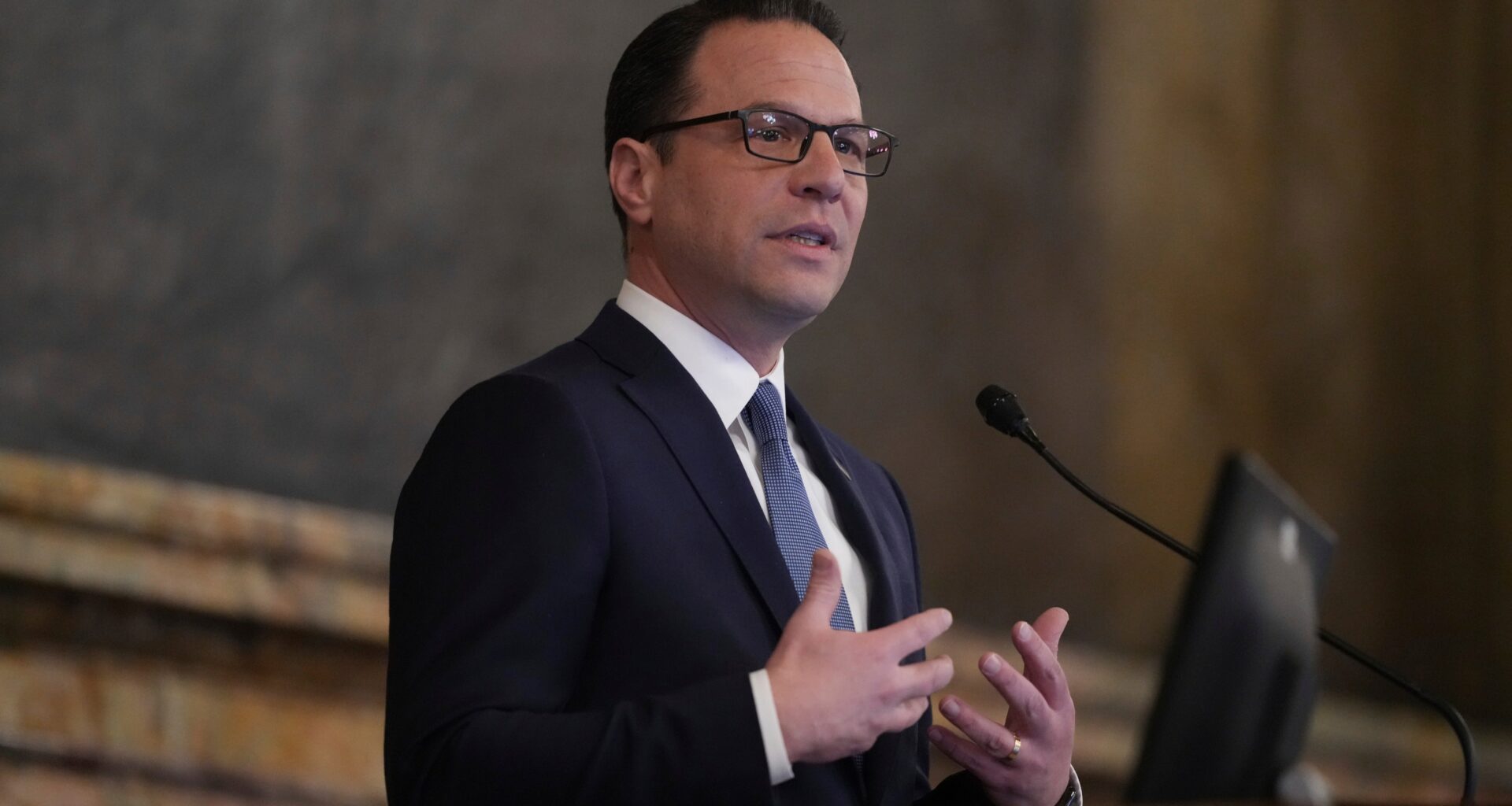This story is part of the WHYY News Climate Desk, bringing you news and solutions for our changing region.
From the Poconos to the Jersey Shore to the mouth of the Delaware Bay, what do you want to know about climate change? What would you like us to cover? Get in touch.
Pennsylvania could start the process of pulling out of the organization that runs the regional electricity grid if the grid operator does not make meaningful reforms in a matter of months, Gov. Josh Shapiro said Monday.
Shapiro has become a vocal critic of the grid operator, PJM Interconnection, as energy bills rise for consumers across the commonwealth. Shapiro said the grid operator’s delays in approving new sources of energy to connect to the grid are driving costs up.
“We need states to have more of a say in how PJM operates. We need to move more quickly on these energy-producing projects, and we’ve got to hold down costs,” Shapiro told reporters during a technical conference in Philadelphia hosted by Pennsylvania and other states in the PJM region. “If PJM cannot do that, then Pennsylvania will look to go it alone.”
Electricity bills across PJM’s territory are rising after PJM’s capacity auctions, in which the grid operator pays power generators to commit to future electricity production during times of peak demand, reached record-high prices the past two years.
After filing a complaint against PJM last year, Shapiro negotiated a price cap on this year’s auction, which his administration said saved consumers billions of dollars.
The Commonwealth of Pennsylvania itself could not leave PJM, as states are not members of the regional transmission organization. Pennsylvania would need to direct the utilities that own transmission lines within the state to exit PJM, either through the legislature or the Public Utility Commission, said Seth Blumsack, a professor of energy policy and economics at Penn State University.
Currently, PJM directs the flow of electricity through the grid, runs the wholesale markets where utilities buy power on behalf of consumers, and studies the effects of new sources and users connecting to the grid before approving them to join.
Pennsylvania exiting PJM would be a complicated process that is not guaranteed to benefit consumers, Blumsack said.
The goal of Monday’s summit was to generate solutions so that the state does not need to pursue that path, a spokesperson in Shapiro’s office said.
Shapiro did not enumerate the specific reforms he would like to see the grid operator undertake in order to keep the state in the grid, but called for a bigger role for states in the governance of PJM, a faster process for new sources of energy to connect to the grid and more affordable electricity for customers.
In response to Shapiro’s comments, PJM Interconnection thanked the governors in its service area for “holding a thoughtful discussion on the challenges shaping our shared energy future.”
“Meeting the demands of a rapidly changing energy landscape will require solutions that extend beyond any one institution,” PJM spokesperson Dan Lockwood said in a written statement. “It will require PJM, the industry, and especially our states all working in concert. PJM will continue to fulfill its mandate of maintaining reliability in as cost-effective a manner as possible for the 67 million people we serve.”

